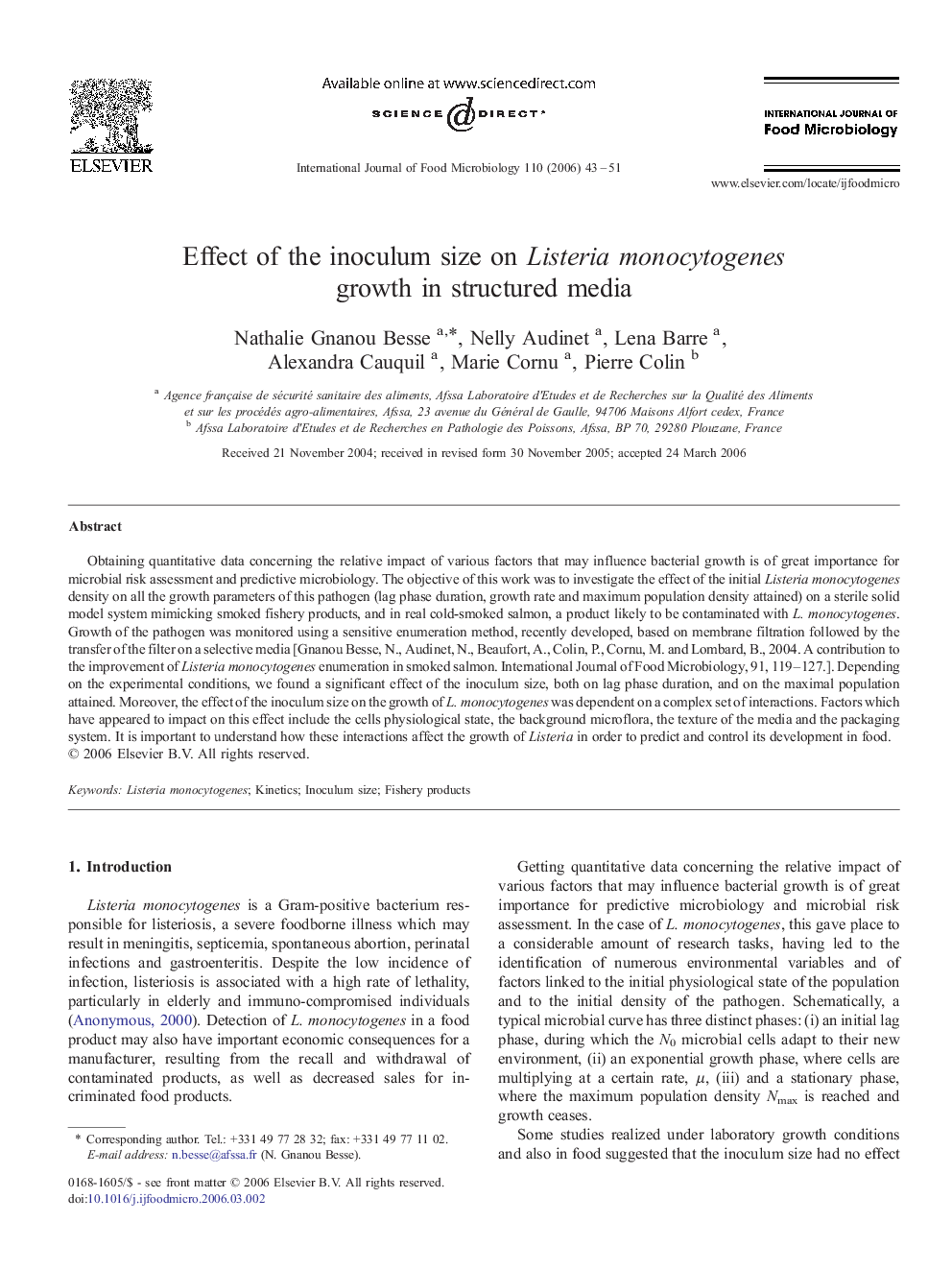| Article ID | Journal | Published Year | Pages | File Type |
|---|---|---|---|---|
| 4370098 | International Journal of Food Microbiology | 2006 | 9 Pages |
Obtaining quantitative data concerning the relative impact of various factors that may influence bacterial growth is of great importance for microbial risk assessment and predictive microbiology. The objective of this work was to investigate the effect of the initial Listeria monocytogenes density on all the growth parameters of this pathogen (lag phase duration, growth rate and maximum population density attained) on a sterile solid model system mimicking smoked fishery products, and in real cold-smoked salmon, a product likely to be contaminated with L. monocytogenes. Growth of the pathogen was monitored using a sensitive enumeration method, recently developed, based on membrane filtration followed by the transfer of the filter on a selective media [Gnanou Besse, N., Audinet, N., Beaufort, A., Colin, P., Cornu, M. and Lombard, B., 2004. A contribution to the improvement of Listeria monocytogenes enumeration in smoked salmon. International Journal of Food Microbiology, 91, 119–127.]. Depending on the experimental conditions, we found a significant effect of the inoculum size, both on lag phase duration, and on the maximal population attained. Moreover, the effect of the inoculum size on the growth of L. monocytogenes was dependent on a complex set of interactions. Factors which have appeared to impact on this effect include the cells physiological state, the background microflora, the texture of the media and the packaging system. It is important to understand how these interactions affect the growth of Listeria in order to predict and control its development in food.
